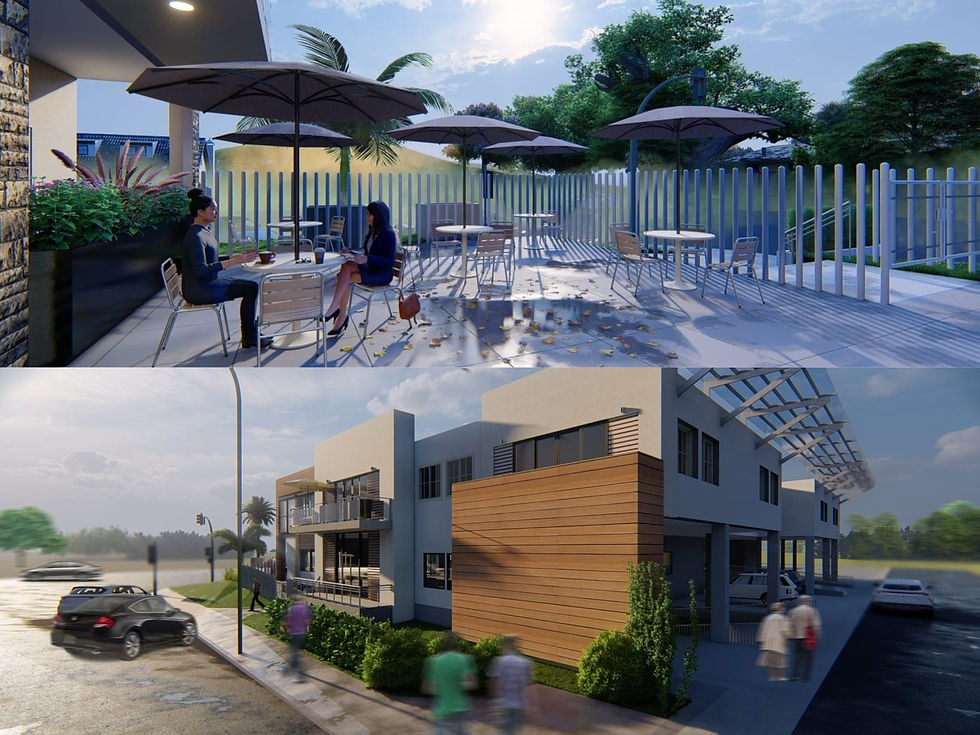Smart Homes, Smart Cities: Technology in Modern Architecture
- Revvia Assistant
- Oct 3
- 3 min read

The role of technology in shaping our built environment has never been more profound. From energy-efficient homes to entire urban infrastructures powered by data, the integration of technology in architecture is redefining how we live, work, and interact with our surroundings. For an architecture firm san diego that prioritizes forward-thinking design, embracing these innovations is not just a trend—it’s a necessity.
The Rise of Smart Homes
In residential building design, smart home technology has transformed the way we experience our personal spaces. From voice-activated assistants to automated lighting and climate control, homeowners now expect comfort and convenience to be seamlessly integrated into their homes.
Custom home architects are increasingly tasked with designing houses that anticipate the needs of their inhabitants. For instance, energy monitoring systems allow homeowners to track usage in real time, making it easier to reduce costs and live more sustainably. Smart thermostats adjust automatically to daily routines, while security systems with AI-driven cameras provide peace of mind.
Beyond convenience, these technologies promote sustainability. Solar integration, rainwater harvesting sensors, and energy-efficient appliances are no longer considered luxury add-ons. Instead, they’re essential components in modern residential building design. This shift underscores how architecture has evolved to meet both personal comfort and global environmental challenges.
Technology in Urban Planning and Smart Cities
While smart homes focus on individuals and families, smart cities take innovation to a larger scale. Cities around the world are adopting technology-driven solutions to improve infrastructure, reduce energy consumption, and create healthier environments for residents.
Smart traffic systems, for example, use sensors and AI to ease congestion, saving both time and fuel. Streetlights equipped with motion sensors adjust brightness based on pedestrian or vehicular presence, reducing unnecessary energy waste. Public buildings incorporate renewable energy and responsive systems to optimize energy usage.
For an architecture firm san diego, the challenge lies in balancing aesthetics with these advanced systems. Urban architecture must remain functional and beautiful, while also integrating the invisible technologies that power smart cities. The result is an interconnected environment where people, buildings, and infrastructure communicate seamlessly.
The Role of Custom Home Architects in Smart Design
Custom home architects are uniquely positioned to bridge the gap between traditional design principles and cutting-edge technology. Homeowners often want residences that reflect their personal style, but they also demand the functionality of smart living. This requires architects to carefully weave technology into the blueprint from the very beginning.
Instead of treating smart devices as afterthoughts, architects are designing spaces where technology is integrated organically. Hidden wiring, modular spaces for future upgrades, and adaptive layouts that anticipate new innovations are now part of the design conversation. This ensures that as technology evolves, the home can evolve with it.
Residential building design is no longer just about walls, roofs, and windows—it’s about creating dynamic living systems. A custom-designed home might include automated irrigation systems that respond to soil moisture levels, or integrated solar panels that supply both the home and electric vehicle charging stations. These features provide comfort, sustainability, and long-term value.
Sustainability and Technology Working Together
One of the greatest advantages of technology in modern architecture is its ability to promote sustainability. Buildings account for a significant portion of global energy consumption, and smart design helps reduce this footprint.
For example, smart glass can adjust transparency to regulate heat and light, lowering the need for heating and cooling. Sensors monitor indoor air quality and adjust ventilation automatically, creating healthier living conditions. Even construction itself has become more efficient with 3D modeling and AI, which minimize waste and optimize material usage.
In San Diego and beyond, technology-driven design aligns with the region’s emphasis on environmental stewardship. An architecture firm san diego that prioritizes sustainable technology not only creates better buildings but also contributes to the city’s long-term resilience.
Looking Ahead: The Future of Smart Architecture
The future of modern architecture lies in adaptability. As artificial intelligence, the Internet of Things, and renewable energy continue to evolve, architects will need to embrace change and anticipate client needs. Custom home architects and city planners alike will be called to imagine spaces that are flexible, responsive, and sustainable.
In the coming years, we can expect homes that fully integrate with personal devices, neighborhoods powered by community microgrids, and cities that actively learn from data to become safer and more efficient. For homeowners, this means greater comfort and personalization. For communities, it means healthier, more sustainable living environments.
At its core, technology in architecture is not about replacing human creativity—it’s about enhancing it. The ability to design homes and cities that respond intelligently to their inhabitants represents the perfect union of art, science, and innovation.




Comments